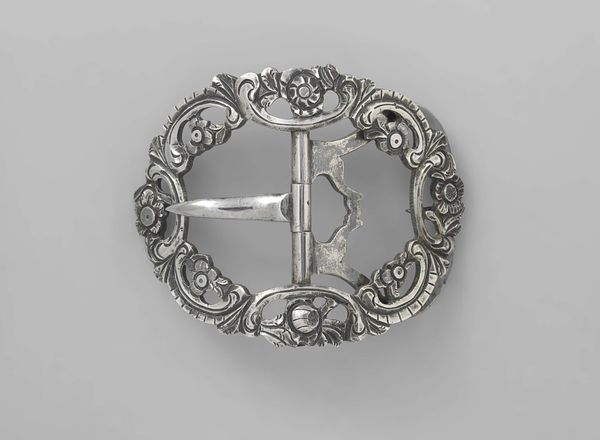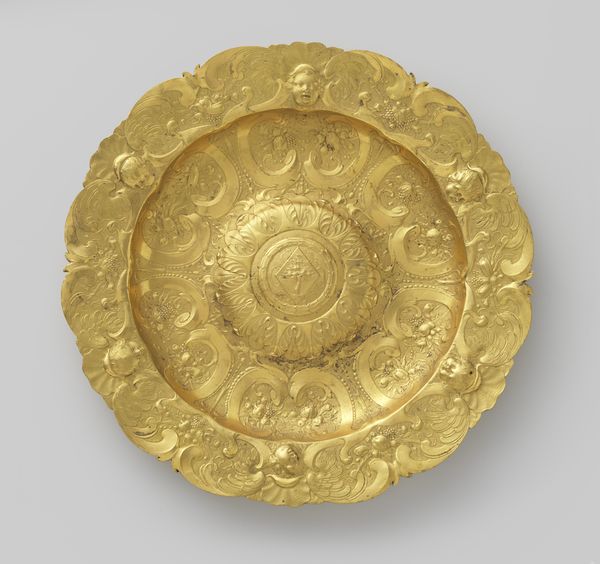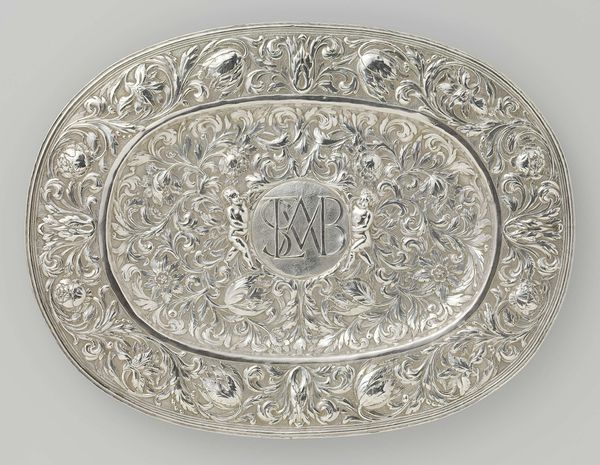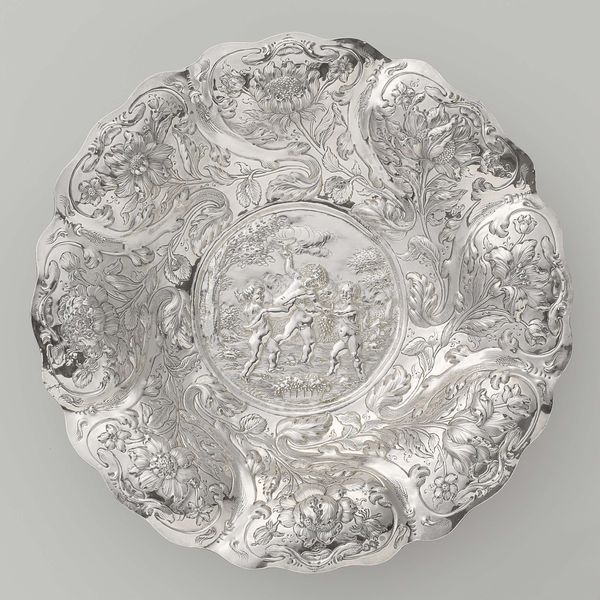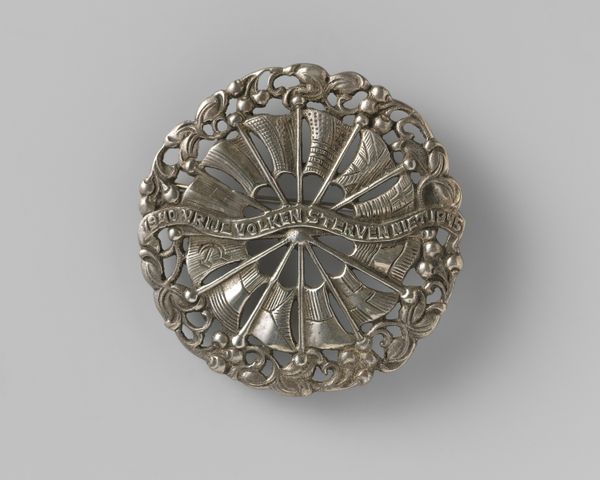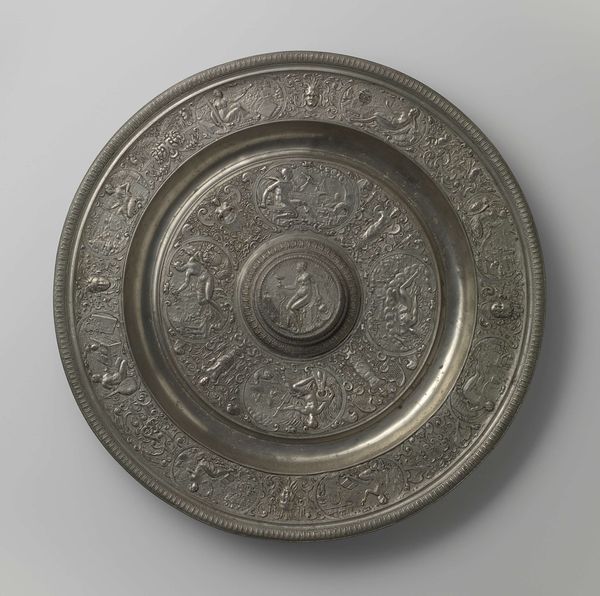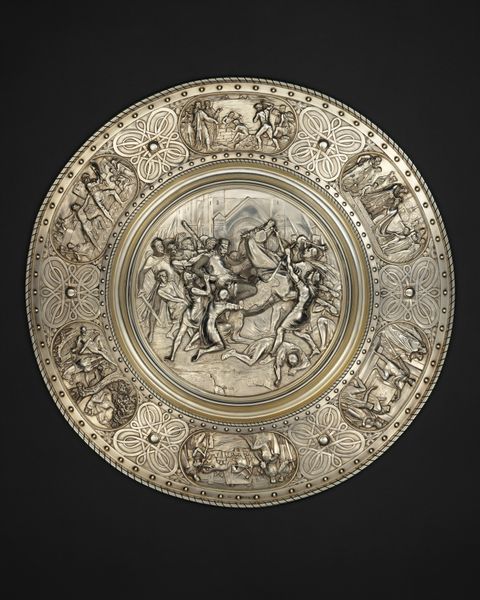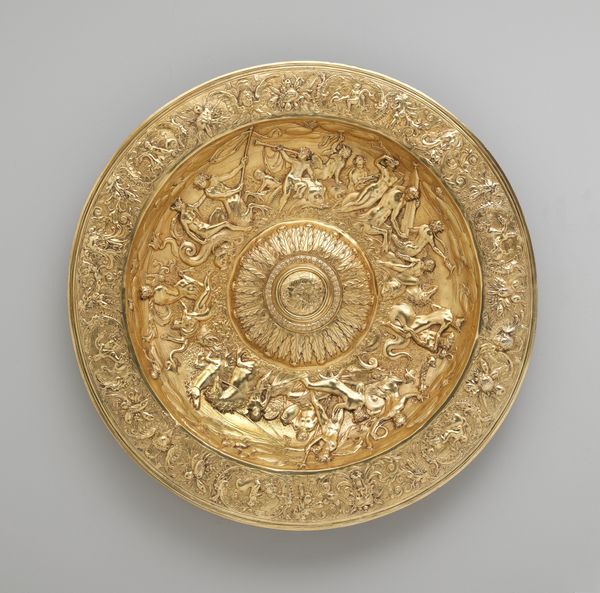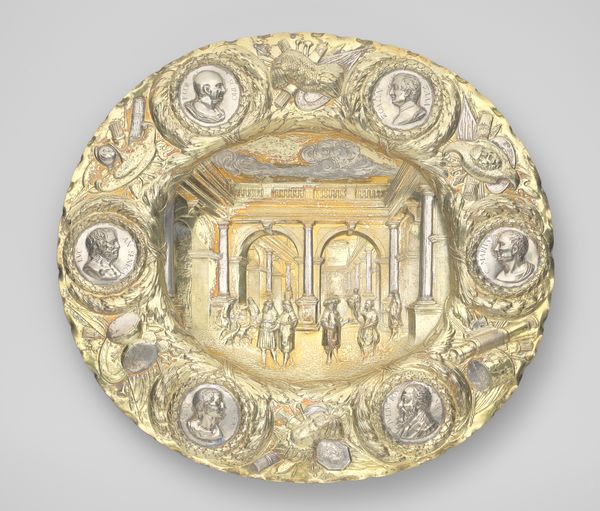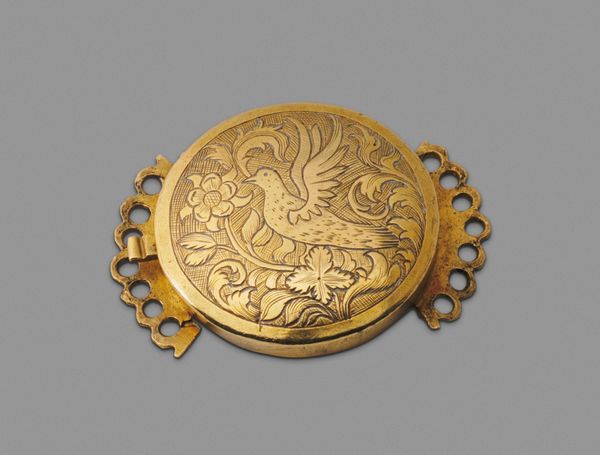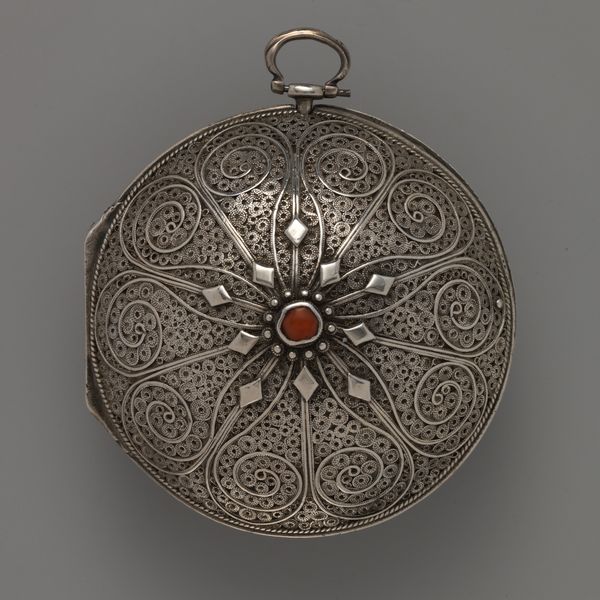
silver, metal, sculpture
#
silver
#
baroque
#
metal
#
sculpture
#
decorative-art
Dimensions: height 6.0 cm, diameter 59.0 cm, width 24.5 cm, weight 2340 gr
Copyright: Rijks Museum: Open Domain
Curator: Let's turn our attention to this striking example of Baroque decorative art, a silver basin and ewer created in 1649 by Andries Grill. Editor: It shimmers with an almost excessive exuberance, doesn’t it? The reflections play across the surface, creating a dizzying sense of movement and light. The density of ornamentation almost overwhelms the eye. Curator: Precisely. That sensory overload is quite intentional, characteristic of the Baroque aesthetic. Consider the material itself – silver. Grill has manipulated it to an extreme degree, pushing the boundaries of what this medium can achieve. The scalloped edges, the repoussé work forming shell and scroll motifs…it's a testament to the silversmith’s skill and artistry. Editor: I'm struck by the contrast between the implied function – these are objects meant for washing, a gesture towards hygiene – and the sheer impracticality of their design. Who would dare use something so ornate, so meticulously crafted? This piece clearly transcends utility, instead becoming an emblem of status, a pure demonstration of wealth and refinement. Curator: The cultural history backs up your interpretation. Silver pieces like this signaled a household’s prominence. During the mid-17th century, the Dutch Republic was experiencing a golden age of trade and prosperity, resulting in heightened production and consumption of luxury goods. These pieces were visual affirmations of a family’s belonging in the upper echelons of society. Andries Grill, from a family of goldsmiths and silversmiths, supplied many such displays for wealthy patrons. Editor: Examining the composition closely, notice how the individual ornamental motifs build on each other in an almost mathematical way, forming an ordered and contained composition despite the freeform qualities of the repoussé. Every curve answers to another, drawing your eye in a rhythmic cycle that has you forever following the next reflective surface or elegant curve. Curator: Absolutely. We are left considering the complex relationship between art and social aspiration. "Basin and Ewer" speaks of a very specific moment in time, capturing an entire set of cultural values about luxury and societal hierarchy through the object itself. Editor: I appreciate how this piece demonstrates that seemingly 'decorative' objects often hold so much deeper and often overlooked, complex information. Curator: A potent reminder to look beyond the surface and find embedded values within the intrinsic forms that we have inherited.
Comments
rijksmuseum about 2 years ago
⋮
This basin and ewer were made for the Delft councillor Gerard Meerman. They are engraved with two escutcheons, one for Meerman and the other for his wife. However, only his shield is filled in. The celebrated Hague silversmith Grill executed the objects in a personal interpretation of the so-called Auricular style, placing emphasis on abstract linear forms.
Join the conversation
Join millions of artists and users on Artera today and experience the ultimate creative platform.
